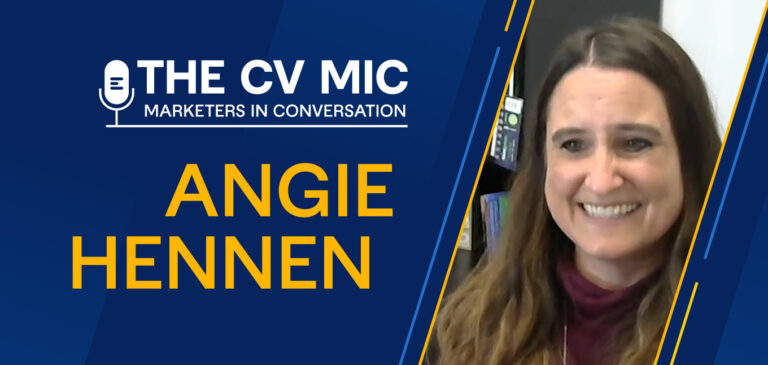Writing content for SEO is an art. It needs to be engaging, properly optimized, and meet search intent for the best results.
As more brands and companies become aware of the value of inbound marketing, they dedicate more budget to SEO content.
However, with the good comes the bad. If you want to rank well on search results, it’s vital to know the best practices for writing content specifically for SEO success. This article will explore the top tips for writing SEO content and how you can incorporate them.
Top Tips for Writing Content for SEO
In this post, we asked the top content and SEO experts to break down the top do’s and don’ts of writing content for SEO. Here’s what they said.
Clearly define your SEO goals
Before you start writing content for SEO, it’s vital to understand your brand’s goals and audience. Lexi Boese, an accountable opportunities expert for The Digital Opportunities, suggests answering these questions first:
- Are you looking for customers to be led directly to purchase a product, or are you trying to establish credibility upfront?
- Do you understand your customers?
- Do you have a list of competitors’ websites ready?
“There are many different approaches to an optimized website, but not all of them will be aligned with your business,” she adds.
Some may need long-form content, while others thrive on short-tail. As you create your SEO-optimized content game plan, make sure to create an individual strategy with measurable results over time. This will allow you to see progress and success.
Don’t expect a website to go from spot 100 to 1 overnight
Remember, SEO takes a long time, and there are no quick wins. When you begin to create and track SEO-optimized content, try to keep in mind it will take time to get results. You need to have the right blog architecture, but above all, you need to have a really good SEO strategy.
“When done correctly, SEO builds a strong foundation for a highly-trafficked website, but it only serves as a piece of the puzzle,” Boese says.
By implementing evergreen content that’s refreshed frequently, pillar pages, FAQs, and other strategies, you will gradually create an impactful SEO blueprint that increases website traffic, domain authority, and high rates of inbound marketing retention.
Know your brand
Before diving into the brief, Kelsey Reaves, an SEO consultant and the founder of SiteSee, says it’s valuable to understand your brand or company’s stance on a specific topic.
Some questions to consider when writing content for SEO:
- What is the takeaway someone should have when reading the article?
- How does your product/service tie into this?
- How can you make the content easy to digest and scan?
With these answers in mind, you can create a detailed outline of what you will cover to meet the reader’s needs.
“How you win the SERPs is by sticking with your particular narrative throughout an entire article, and at the same time, fulfilling the intent of that query,” Reaves adds.
SEO content briefs need to be brief, comprehensive, and stay within the brand’s voice and mission statement.
Don’t just focus on the keywords
In addition to the outline of your SEO content brief, you will need to integrate specific keywords to assist in ranking. Too often, writers get hung up on the keywords and end up creating robot speak. Melissa McHugh, the SEO manager for POLYWOOD, says you want to make sure to include the right specific topic keywords, but the bulk of your brief should focus on the on-page elements needed to be successful.
“If there are posts or products you need to link to, they should also be on the brief. If there are contextually relevant topics you want the piece to cover, make sure to specify what they are and how to use them,” she continues. This gives you a more rounded piece of content.”
Pro tip: if you need help developing blog niche ideas for your next post, use a blog topics generator. Remember, your blog topics should match your audience’s search intent, answer their questions/problems, and present your product as the solution.
Answer Google’s questions
While 600 to 700 words per page of your website is recommended, there is no magical word length that will equate to a higher ranking. According to Boese, it’s important to remember that Google crawls sites to find the most accurate answer to a search inquiry.
As a marketer, she says your job when writing content for SEO is to make your content as straightforward as possible.
“We always suggest that our clients think about what their potential customers may search for online and how our clients can make sure they’re answering all questions with quality, scannable copy on their website,” she adds.
Don’t add content for the sake of adding content
Don’t try to overexplain or add metaphors or fluff when writing content for SEO. The audience wants to read as little as possible to find their answer. Readers can tell when an article is drawn out to meet a specific word count.
Reaves says. “Back in the day, there used to be a lot of emphases placed on word count, which led to the skyscraper method and unnecessarily long articles,” she continues. “As someone searching on Google, the last thing you want to see is a 2,000-word article when you’re simply looking up the definition of a term.”
Focus on your customers first
If your keywords aren’t answering the questions your customers (or potential customers) are looking for, they won’t resonate. Boese suggests keeping a spreadsheet of all the questions your client’s customers ask — during chat sessions, social media, or customer support emails — and using those as a baseline for building your FAQ section or a blog post that answers FAQs.
“Add your keywords as you’re writing the responses,” she says. “We did this for a dispensary client and saw an 83 percent increase in organic traffic to the FAQ page over six months.”
Don’t plagiarize other people’s work
Though it’s a fundamental lesson of journalism training (and, well, common sense), sometimes it can be tempting to copy and paste from similar websites. This is a big no-no ethically — and when writing content for SEO.
“Google is constantly searching for the most relevant answer to the search inquiry while weeding through ‘spam’ websites,” she says. “If your website has FAQs pulled from other websites, you’re not doing yourself any favors. We’ve seen many websites penalized for this where they’ve gone down in rankings dramatically.”
Write relevant content that provides value
SEO manager Melissa McHugh says one of the biggest reasons evergreen content fails is that it focuses too heavily on driving traffic and not enough on providing value.
As an example, at her company, Polywood, their desert furniture buying guide only drives a few hundred visits per month, but the traffic is consistent and, more importantly, it drives revenue.
“The post is successful because it focuses on walking a user through all our furniture choices as objectively as possible,” she adds.
Don’t let evergreen content stagnate
When writing content for SEO, it should be considered a living-breathing document that needs to be refreshed and reevaluated many times. As McHugh explains, you want to send freshness signals to search engines and make sure the information on your content is up-to-date, so that it remains useful to the reader.
“As a general rule, evergreen content should be updated no less than once per year,” she says. The exception to that is if something changes in your industry, it should be updated more often. “We published our desert home buying guide a year ago in May, refreshed it in mid-March it saw its highest revenue month since it was published,” she adds.
Use internal linking + easy navigation
Pillar pages and topic clusters create an excellent internal-linking structure to keep users engaged with your content. However, the navigation must be easy to access to help with SEO.
“Websites with strong internal linking almost always outperform sites that don’t,” Reaves says. “Depending on your site size, it can make sense to use a dedicated subfolder for each pillar page and then have each subsequent topic live under that subfolder. Not only is it easy for users to understand and navigate, but it also makes it easy for Google to know exactly how the pages on your site relate to one another.”
Don’t orphan pillar pages from the rest of the site
Sometimes Reaves sees pillar pages linking to other related articles, but then it stops there.
“Pillar pages should be linking to related landing pages, glossary pages, hub pages, and vice versa,” she explains. “Internal linking is super important for SEO, and I’m constantly surprised by how even adding a few internal links from different sections of your site can hugely impact performance in the SERPs.”
Build quality backlinks
‘E-E-A-T’ stands for ‘experience,’ ‘expertise,’ authoritativeness,’ and ‘trustworthiness’ and is part of Google’s SEO algorithm.
Kelsey Reaves says building high-quality backlinks is part of increasing your authority and trustworthiness in the eyes of Google, and it can’t be ignored when writing content for SEO.
“Viewing your link prospects as partners allows you to build a network you can reach out to time and time again whenever you’re looking to place a few backlinks,” she says. “To return the favor, you can mention them in a new post or a guest post on another website. Creating link partnerships like this allows you to create a steady flow of backlinks over time with little effort.”
Don’t work on SEO campaigns sporadically and then stop
Once you create your SEO content plan, update your website and blog, and check through all of the boxes, you’re done. Right? Nope, you’re only getting started.
As Reaves explains, companies with the best content engines and high domain authority have workflows for every significant facet of SEO — technical, content, and link building. “You don’t want to focus solely on one area. All are an important part of the recipe in increasing your authority,” she adds.
Ready to Create SEO Content?
SEO should be an important — and beneficial — part of your marketing toolbox. By creating captivating content that both engages your audiences and integrates the right keywords, you build trust within your industry and with your customers.
Step one is just getting started — and if you need a top-notch SEO strategy or content help, we’re always here to help.







